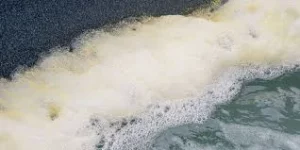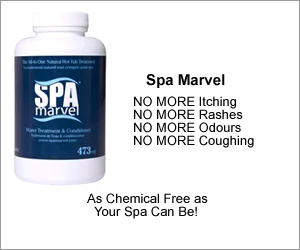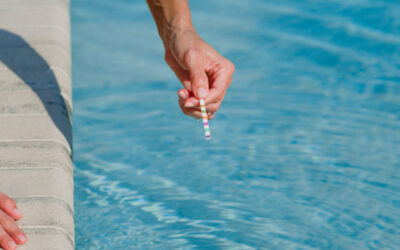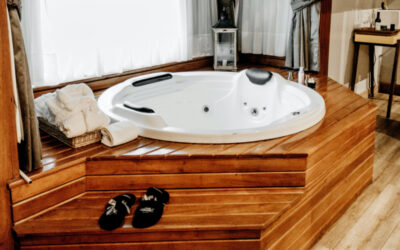Hot Tub Biofilm – How to Eliminate It & Prevent It
Are you suddenly using more chemicals in your hot tub? If your chemical levels are off more often than they are balanced, it could indicate a buildup of hot tub biofilm in your spa.
Biofilm can form in your spa’s equipment and plumbing, increasing the risk of continuous water contamination if left untreated. Biofilm buildup can be damaging to your hot tub and unhealthy for bathers. So cleansing biofilm from your spa’s plumbing with a hot tub biofilm cleaner is crucial. To rid your spa of biofilm and reduce potential health risks from coming in contact with it, use a hot tub biofilm remover every time you change your hot tub water. With regular use of biofilm remover for a jetted tub, you’ll minimize biofilm contamination.
How biofilm enters pools and hot tubs
So, how does spa biofilm get into your hot tub or pool, and what exactly is it? It begins with a buildup of bacteria, typically in the plumbing and pipes of your tub. The bacteria comes from mold, algae, fungus, and airborne contaminants or is introduced to the spa by bathers.
Hot tub biofilm creates a slimy outer layer to protect itself from the water’s sanitizers and chemicals. As the spa biofilm becomes resistant to the sanitizers, it can continue to grow and thrive in the warm, watery environment. It can make your water cloudy, foamy, and odorous. When this occurs, you’ll need to decontaminate your hot tub and denature the biofilm.
Preventing and eliminating biofilm in swimming pools
Likewise, with pools, biofilm develops in the plumbing system. Pool biofilm eventually can stick to the sides of the pool walls and the steps leading out of the pool. When this occurs, the pool biofilm must be brushed or scrubbed off the pool walls and steps. This removal of the biofilm from the hard surfaces into the water will allow the sanitizer to kill the algae and bacteria present more easily.
Pool biofilm can be prevented by maintaining the required level of sanitizer in the water and using an enzyme-based water treatment product like Pool Marvel, which can help prevent pool biofilm formation on the walls and steps.
Health Risks of Spa Biofilm
Biofilm poses several health risks to bathers and swimmers who come in contact with the contaminated water. Biofilm is a buildup of bacteria, and the longer the biofilm goes untreated, the more dangerous it becomes.
This is because chlorine or bromine in the water rapidly breaks down as it works against biofilm. In turn, the water becomes more acidic and can irritate the skin. If chemical levels aren’t maintained, merely exposing your skin to contaminated water for any period also increases the risk of contracting a hot tub rash. Regular use of a hot tub biofilm remover will reduce or eliminate biofilm contamination and its risks.
Another health concern is that when swimmers are exposed to pool biofilm and accidentally ingest the contaminated water, it can lead to severe bacterial infections. Pool biofilm can harbor pathogens that are harmful to humans and challenging to kill, ultimately wreaking havoc on swimmers’ immune systems. So it’s vital to properly maintain the chemical balance to prevent pool biofilm in the water and reduce the risks to bathers and swimmers.
Effects of biofilm on equipment
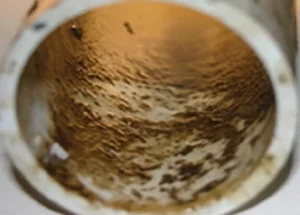 When biofilm is present, it is more challenging to maintain sanitizer levels. You are, therefore, adding more chlorine or bromine than you normally would. When chlorine and bromine are mixed with water, they turn to acid, lowering your alkalinity. When alkalinity gets below 80ppm, the water becomes very acidic and can cause itchy skin, rashes and can even start to degrade the o-rings, seals, and gaskets in your spa, which will lead to leaks and expensive repairs. This can be avoided by always keeping your water balanced.
When biofilm is present, it is more challenging to maintain sanitizer levels. You are, therefore, adding more chlorine or bromine than you normally would. When chlorine and bromine are mixed with water, they turn to acid, lowering your alkalinity. When alkalinity gets below 80ppm, the water becomes very acidic and can cause itchy skin, rashes and can even start to degrade the o-rings, seals, and gaskets in your spa, which will lead to leaks and expensive repairs. This can be avoided by always keeping your water balanced.
Biofilm in new spas
Biofilm primarily resides in the plumbing of your hot tub or pool. Unfortunately, new hot tubs can come with biofilm already in the plumbing. When hot tubs are manufactured, they are filled with water and tested for leaks, then drained. Although the water has been drained from the spa, the plumbing is still damp. The spa is then shrink wrapped and is ready for shipping. The damp, dark, warm plumbing with virtually no airflow is an ideal environment for contaminants such as biofilm to develop. So when your new spa is filled and ready for use, biofilm can make its way into your filters, jets, and any crevice of your hot tub. To prevent this, use a hot tub biofilm remover such as Spa Marvel Cleanser to eliminate any biofilm that might not be evident when you first set up your spa.
Hot Tub Biofilm Removal
Removing biofilm requires some effort depending on the severity of contamination. Your focus should be on the plumbing and filtration systems, cleansing them with a hot tub biofilm cleaner to eradicate the biofilm.
Hot tub biofilm removal begins by removing your filter and sanitizing it. This will ensure a dirty filter cannot recontaminate your spa if any biofilm is present on the filter. You can do this by soaking the filter in a bucket of super-chlorinated water for 72 hours.
Then you will need to super-chlorinate the hot tub for 72 hours to kill any surviving pathogens in your hot tub and it’s plumbing. You’ll find instructions on how to super-chlorinate your hot tub here. After completing the 72 hour super chlorination period ensuring that you have the super-chlorinated water run through all the water features, jets and out the drain of your spa. This is to ensure that the biofilm is being completely sanitized from the entire plumbing system and around the drain, where contaminants can accumulate. Then use a hot tub biofilm cleaner to purge the spa’s plumbing. Spa Marvel Cleanser is an excellent choice that deeply penetrates your hot tub’s plumbing and equipment. After allowing the Spa Marvel Cleanser to work for 24 hours, you can drain your spa, if biofilm or other buildup is visible after emptying your spa or pool, scrub it off.
Finally, install the clean filter and refill your hot tub.
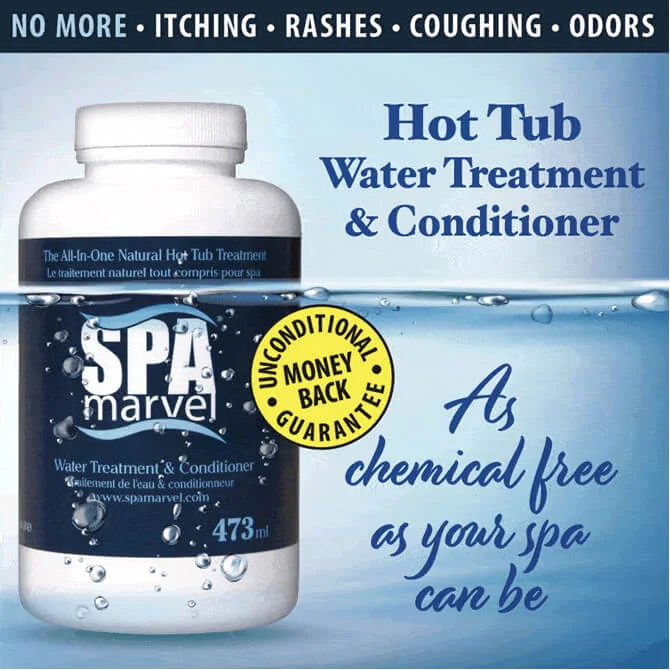
How to Prevent Biofilm
To hinder hot tub biofilm contamination, keep your water adequately maintained and balanced. When the chemicals are balanced, they can do their job to eliminate bacteria in the water.
- Regularly clean the filter and replace it when necessary.
- Keep the water circulating even when not in use. Proper circulation of the water ensures water cannot stagnate anywhere in the spa. Also, leave all jets open and keep your waterfall running, so the water is continuously flowing.
- Replace cracked and waterlogged lids to prevent them from harboring and dripping contaminants into the water and infecting your spa.
- Use a hot tub biofilm remover or a biofilm cleaner for a jetted tub anytime you drain the spa.
No Need to Worry
Over time, biofilm can make its unwelcome presence in your spa. Fortunately, hot tub biofilm removal is a relatively easy process, and prevention is even easier. Use a hot tub biofilm cleaner before emptying the water from your hot tub. This will remove the biofilm that may be harboring in new and old tubs. So take precautionary measures to keep your tub clean and free of biofilm so you can enjoy your spa fully.



